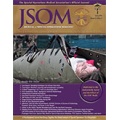Compensatory Reserve for Early and Accurate Prediction of Hemodynamic Compromise: Case Studies for Clinical Utility in Acute Care and Physical Performance
Stewart CL, Nawn CD, Mulligan J, Grudic G, Moulton SL, Convertino VA 16(1). 6 - 13 (Journal Article)
Background: Humans are able to compensate for significant loss of their circulating blood volume, allowing vital signs to remain relatively stable until compensatory mechanisms are overwhelmed. The authors present several clinical and performance case studies in an effort to demonstrate real-time measurements of an individual's reserve to compensate for acute changes in circulating blood volume. This measurement is referred to as the Compensatory Reserve Index (CRI). Methods: We identified seven clinical and two physical performance conditions relevant to military casualty and operational medicine as models of intravascular volume compromise. Retrospective analysis of photoplethysmogram (PPG) waveform features was used to calculate CRI, where 1 represents supine normovolemia and 0 represents hemodynamic decompensation. Results: All cases had CRI values suggestive of volume compromise (<0.6) not otherwise evident by heart rate and systolic blood pressure. CRI decreased with reduced central blood volume and increased with restored volume (e.g., fluid resuscitation). Conclusion: The results from these case studies demonstrate that machine-learning techniques can be used to (1) identify a clinical or physiologic status of individuals through real-time measures of changes in PPG waveform features that result from compromise to circulating blood volume and (2) signal progression toward hemodynamic instability, with opportunity for early and effective intervention, well in advance of changes in traditional vital signs.


 Español
Español 




